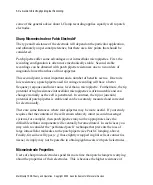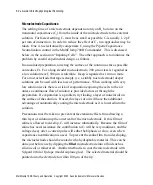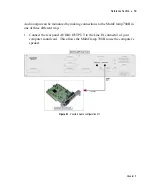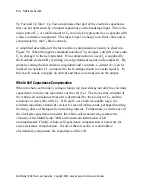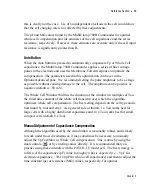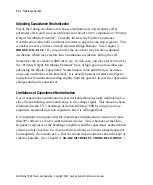
Reference Section
•
73
•
The resistance of the agar bridge (if used)
Typical values of the access resistance of a 1 mm diameter sphere in Ringer's
solution (such as an oocyte) are on the order of 150-200
Ω
. This is a given, and no
amount of manipulation can alter this for a given set of experimental conditions;
fortunately it is relatively small. On the other hand, the combined resistance of the
grounding pellet and agar bridge are larger, but one can take precautions to
minimize them. A 1 mm diameter Ag/AgCl pellet in Ringer's solution has a
resistance of 300-600
Ω
, depending on how much of the surface is in contact with
the saline. The larger the surface area in contact with the saline, the smaller the
resistance.
The resistance of an agar bridge depends on the length and diameter of the bridge,
as well as its contents (
i.e.
Ringer's Solution
versus
3 M KCl). For a 1 cm long
bridge:
1 mm diameter
2 mm diameter
Ringer's
10.2
k
Ω
2.6
k
Ω
3 M KCl
510
Ω
130
Ω
Therefore, to minimize R
b
, it would be best to eliminate the agar bridge and ground
the preparation directly with a Ag/AgCl pellet. The pellet should be as large as
practical, and the area of it in contact with the solution should be maximized. With
this kind of bath electrode, you should avoid perfusing the bath with solutions
containing different chloride activities. The DC offset of an Ag/AgCl pellet
changes with chloride activity.
In order to minimize R
b
when using an agar bridge, it is best to fill the bridge with
3 M KCl instead of Ringer's solution. When the agar bridge is filled with 3 M KCl,
the sum of all components of R
b
will be approximately 1-2 k
Ω
. If leakage of KCl
from the agar bridge is a problem, it may be necessary to fill the agar bridge with
Ringer. In this case, R
b
will be several kilohms.
Chapter 5


